If you’re flying Malaysia Airlines around the Asia-Pacific region, there’s a good chance you’ll board one of their ageing—but still reliable—Airbus A330-300s. Despite newer A330neos slowly entering the fleet, delivery delays mean these 14-year-old workhorses will remain in service for the foreseeable future.
One regional route served by this aircraft is Taipei. I recently flew this service in Economy Class on the airline’s A330-300 and found the cabin product to be both decent and tired.
Departure from Kuala Lumpur International Airport (Terminal 1)
Malaysia Airlines operates a once-daily service from Kuala Lumpur to Taipei with a morning MH 366 departure out of KUL. With this timed during the airport’s morning rush, the queue for the airline’s international Economy Class check in counters stretched long enough that a secondary queue area was necessary.
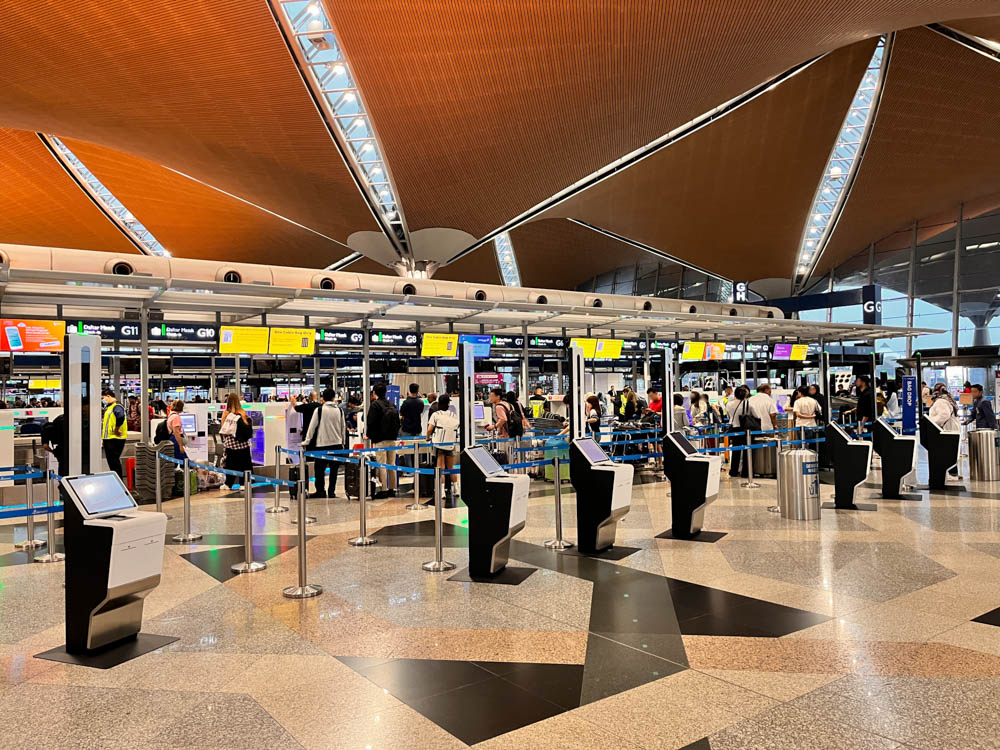
I opted to join the shorter queue to use KUL’s brand new self-check in/bag drop counters. A ground agent guided me to the self-check in kiosks where I printed my baggage tag, and then I joined the dedicated queue for the self-service bag drop. This turned out to be much faster than the staffed counters, though attaching my own baggage tag manually for the first time required some trial and error.
As with most international departures from KUL, MH 366 leaves from the Satellite Terminal—still only accessible by shuttle bus, as the Aerotrain remains suspended over three years into its replacement project.
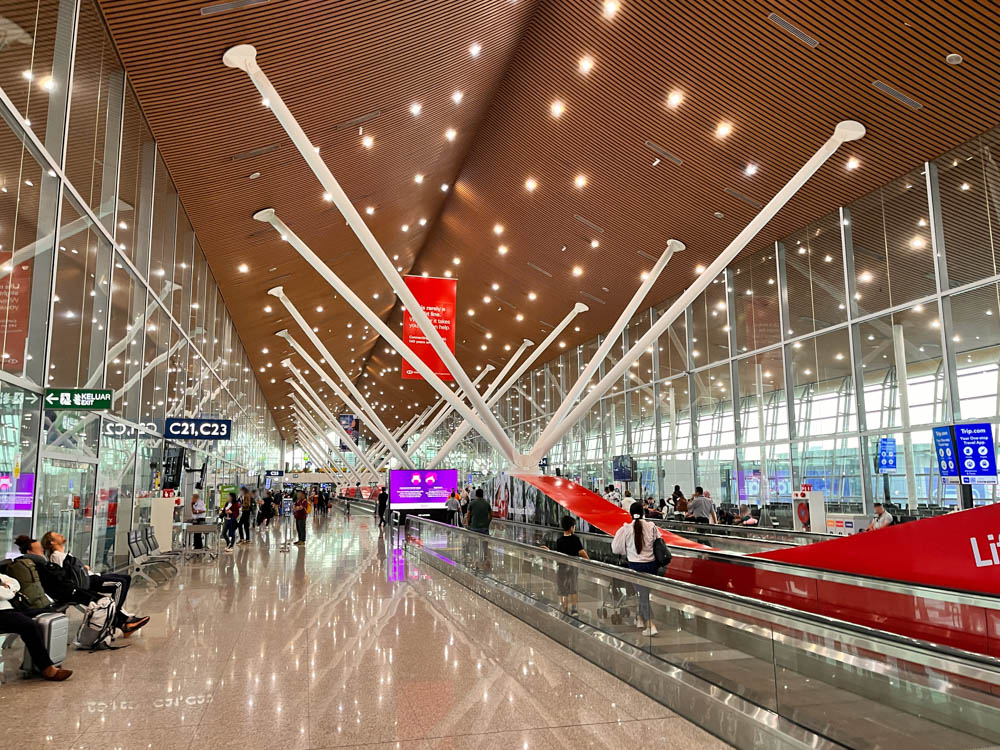
Boarding was from Gate C27, which is one of KUL’s few A380-capable gates. Gate staff conducted boarding by strictly prioritising business class cabin passengers, premier Oneworld & Enrich frequent flyer members, and then boarded the rest of Economy by zones.

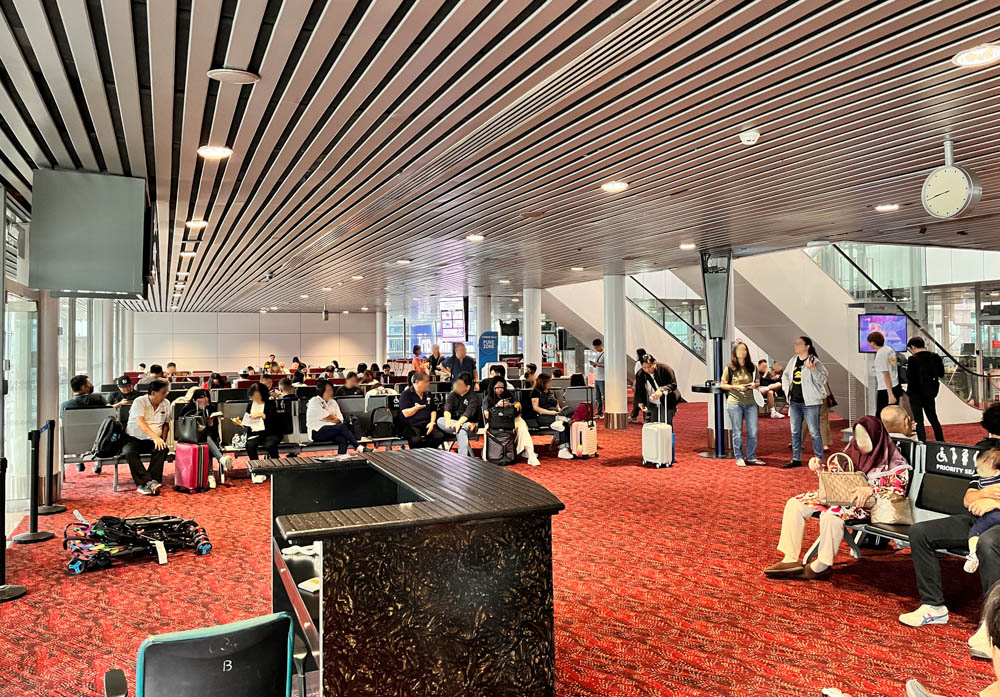

Despite the smooth boarding, the flight still departed 10 minutes late due to airspace congestion out of KUL – A recent norm at KUL during rush hours. We had the pleasure of sitting through the airline’s very musical safety video (YouTube link) while taxiing to the runway, though I must say I’m still not a fan.
Onboard Cabin & Amenities
Malaysia Airlines equips its A330-300s in a 2-class configuration, featuring 27 Thompson Aero Vantage seats in Business Class, and 263 Weber 5751 seats in Economy Class.
Malaysia Airlines A330-300 Economy Class
Malaysia Airlines configures its A330 Economy Class in a 2-4-2 layout and this aircraft, 14 year old 9M-MTB, is no different. With only 8 seats across, the cabin feels more spacious than competitors flying with a 3-3-3 layout on their A330s instead. The airline also sells a small cabin with extra legroom, but the seats are the exact same as the ones in the regular Economy Class cabin. All Economy seats are adorned in either maroon, light purple, and dark purple seat covers alternating every 2 rows; The cabin bulkheads are adorned in a light grayish-purple tone, which was the airline’s cabin colour scheme in the 2010s.
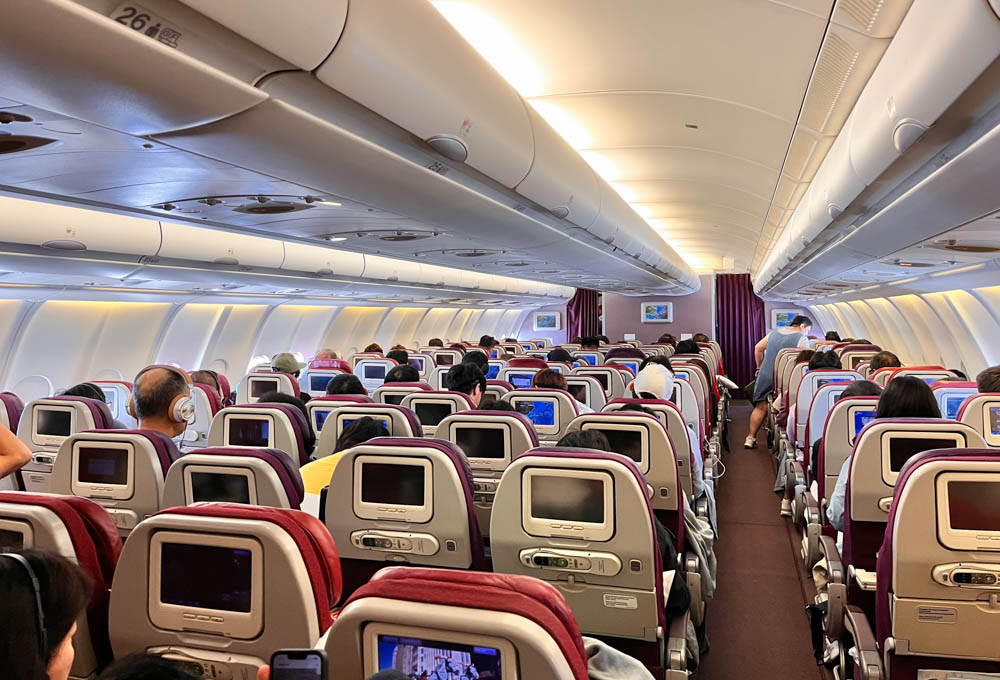
The regular Economy seat itself ticks most of the proverbial boxes on paper. Each row has 32 inches of pitch (giving market standard legroom), a 9 inch IFE screen and remote (more on these later), a USB-A charging port at each seat, and one universal 115V AC power plug shared between every two seats. A blanket, a pillow (in single use covers), and a pair of headphones were already placed at each seat during boarding.
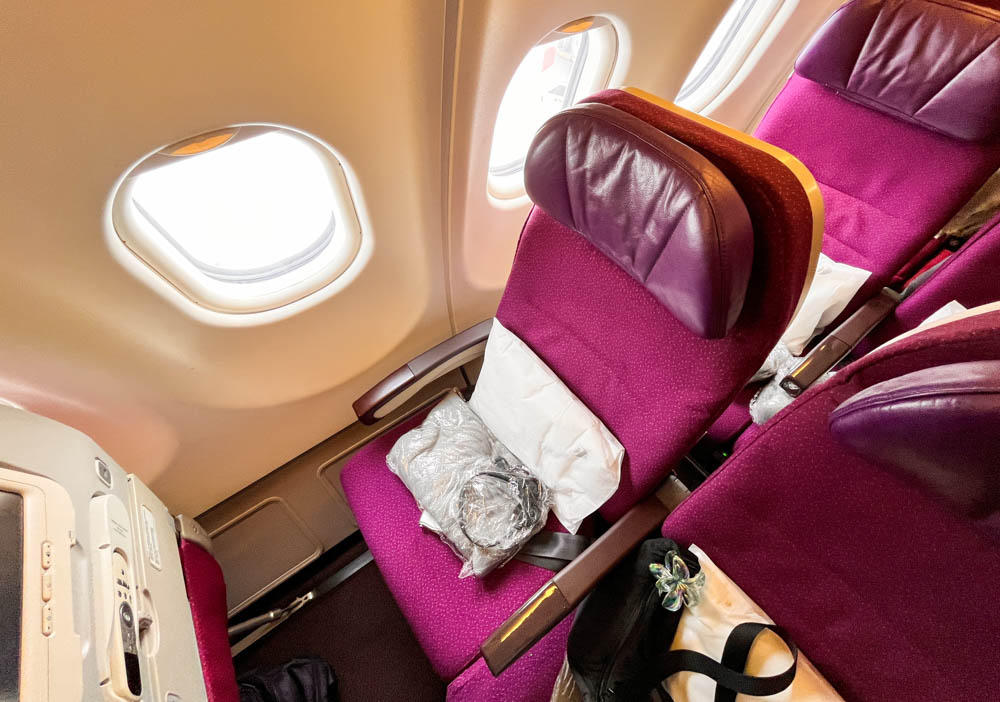
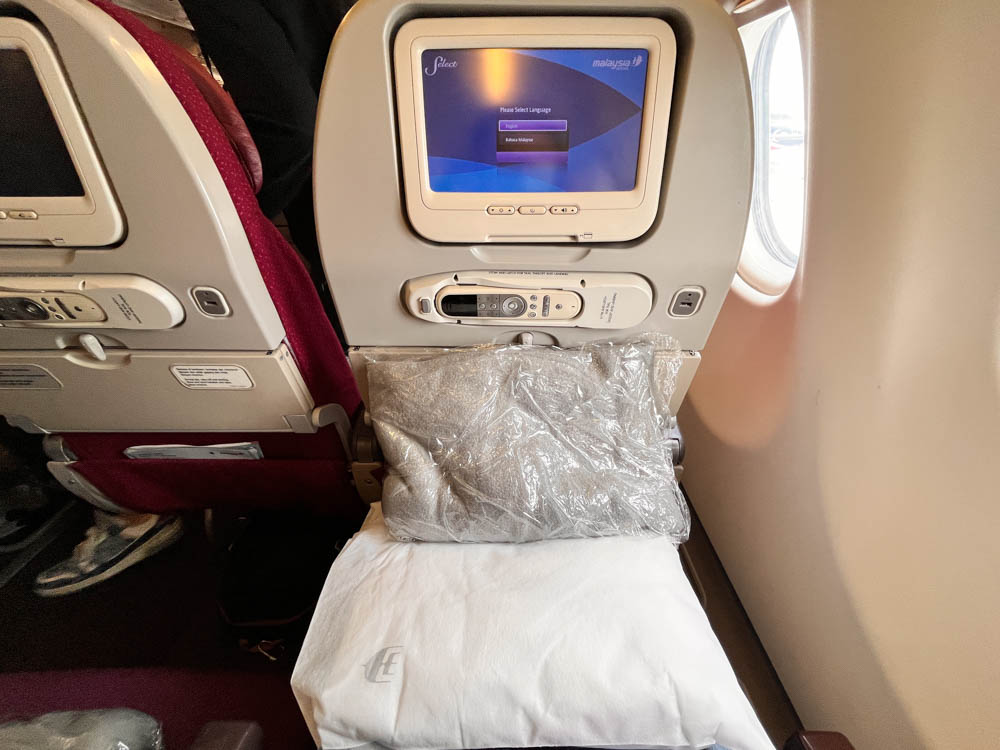
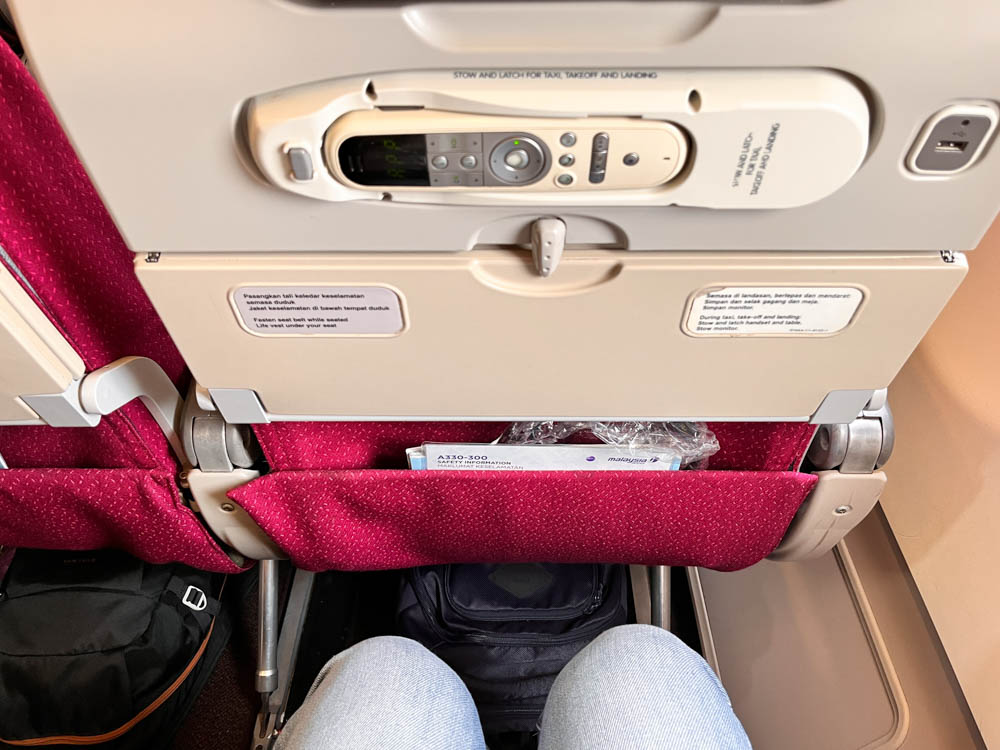
That being said, the cabin’s age was hard to ignore. The seat itself worked fine, but my seatback cushion felt somewhat flat. At various points in the flight I used the pillow as a back cushion, but it wasn’t enough. It really did signal that Malaysia Airlines is running on tired cabin products while regional rivals soar ahead.
There were also other signs of ageing: overhead bins squeaked and rattled during taxi, and both lavatories I used had peeling surfaces with one even having the flush button taped in place. Nothing was outright broken, but it portrayed a lack of care for the cabin’s condition by an airline that was trying to rebuild its premium positioning. Sure, the cabin crew were excellent on this flight as always, but there’s only so much they can do in a cabin with patched up fixtures.
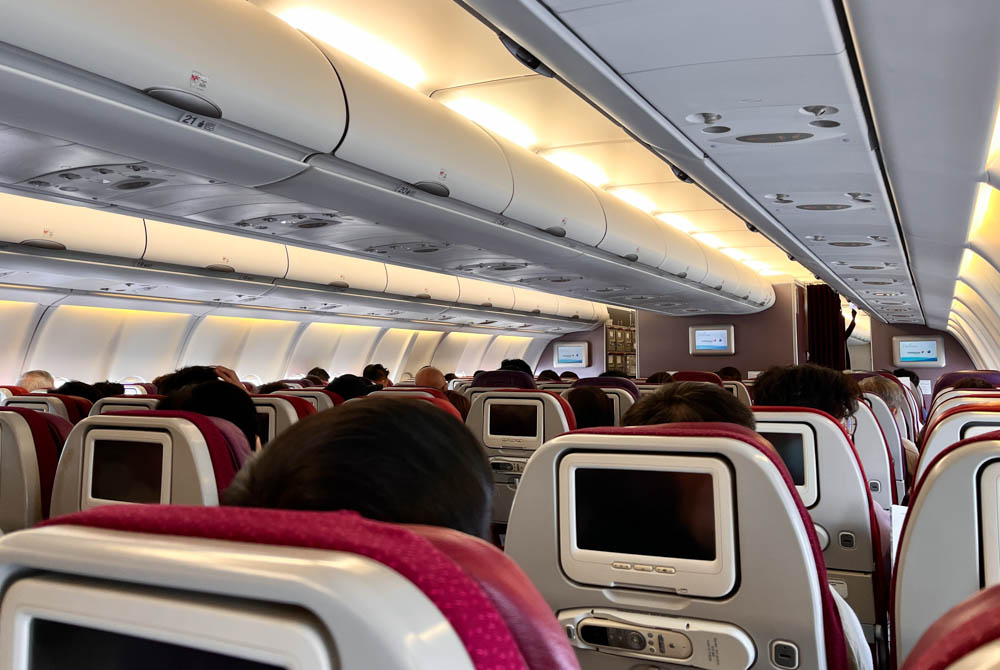
If this sounds like my earlier review of the airline’s A350 Economy Class, that’s because the same issues were present on both flights’ cabin. Malaysia Airlines hasn’t publicly announced plans to refurbish its A330-300s, but in my view, even a modest refresh would go a long way toward improving the passenger experience while the new A330neos are still en route.
Malaysia Airlines Select Inflight Entertainment
The airline’s A330-300s are still equipped with the ageing Select IFE system. These debuted in year 2010 on the airline’s then new B737-800s, and have become slow and outdated since then. The sluggish experience is made worse by the resistive touch screens, and the credit card swipe-slot really dates the hardware.
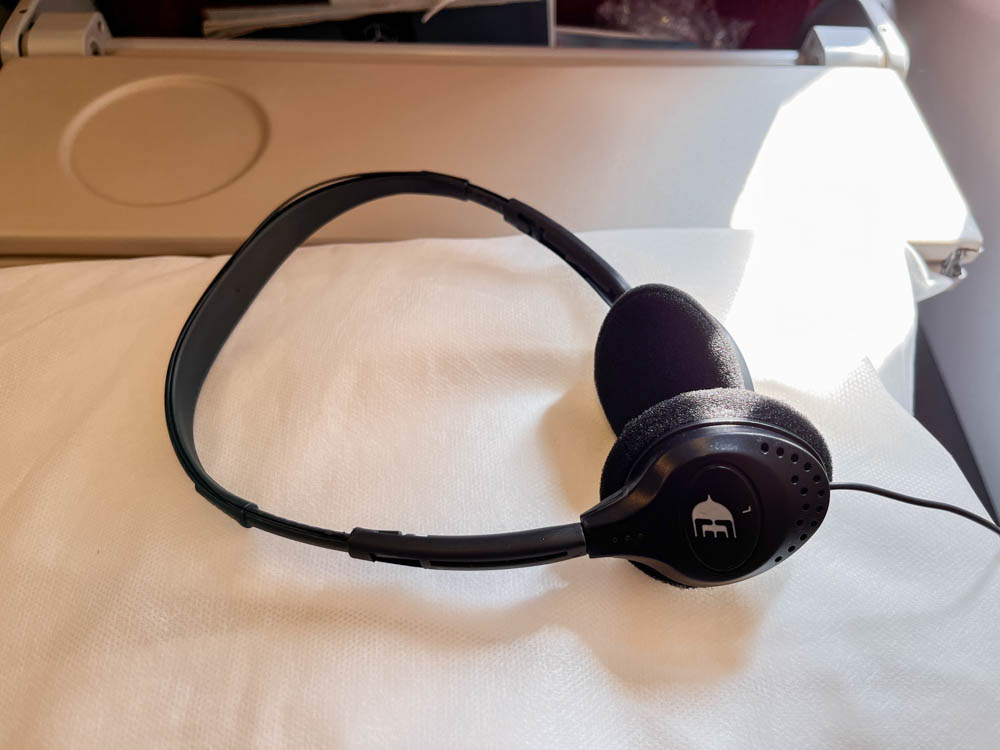
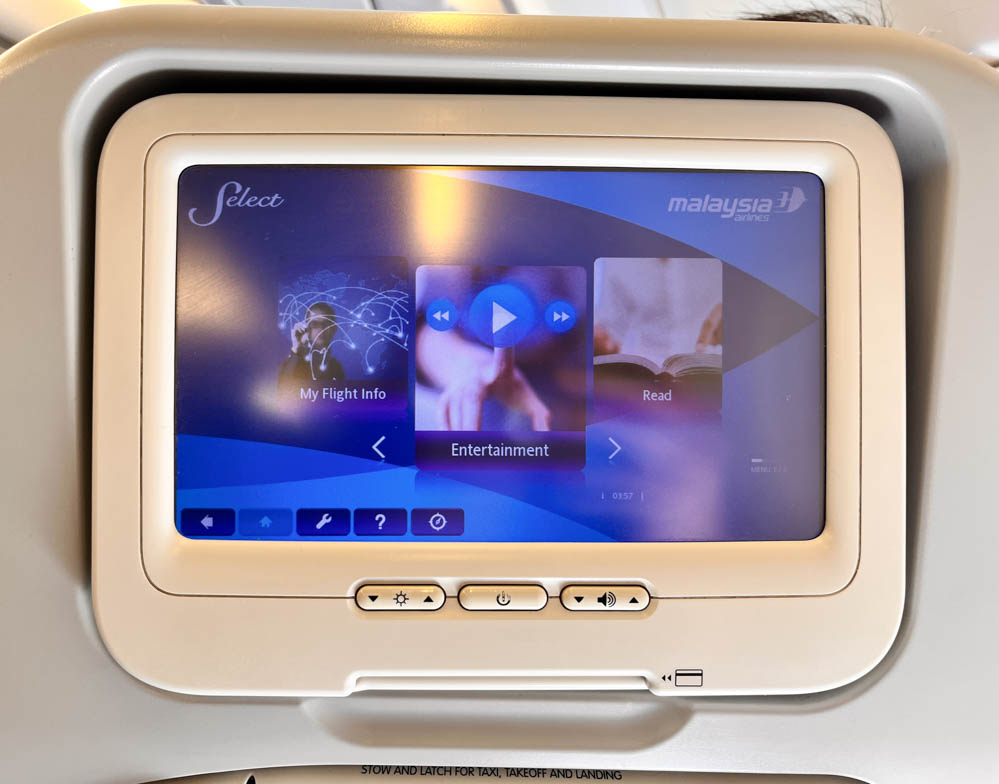
The decent selection of IFE content partially makes up for the system’s hardware shortcomings, even if they will never beat the vast libraries of Qatar Airways’ Oryx One and Emirates’ ICE. To my surprise, all 3 instalments of Peter Jackson’s Lord of The Rings trilogy were loaded, and I spent most of the flight watching The Fellowship of the Ring – not a bad way to spend time!
Malaysia Airlines inflight Wi-Fi
Malaysia Airlines does offer free inflight Wi-Fi, but only on selected aircraft. While all of its A350s and A330neos are equipped with Wi-Fi, only part of the A330-300/-200 fleet have that feature installed. Unfortunately, my aircraft was one of those without inflight Wi-Fi.
Onboard Catering
Malaysia Airlines KUL-TPE Breakfast service
The crew went round with a choice of drinks shortly after departure, followed by Breakfast about an hour after. Malaysia Airlines offers Chef On Call in Economy on flights departing KUL. A choice of 5 meals were offered for pre-booking – I went with the Braised Chicken with Chestnut, which was served on a tray alongside a pack of the airline’s signature peanuts, a small cup of Sunglo strawberry yoghurt, cut fruits, a bottle of water, and a choice of drink. Alcohol was available on this flight to Taipei, and I opted for the red wine.
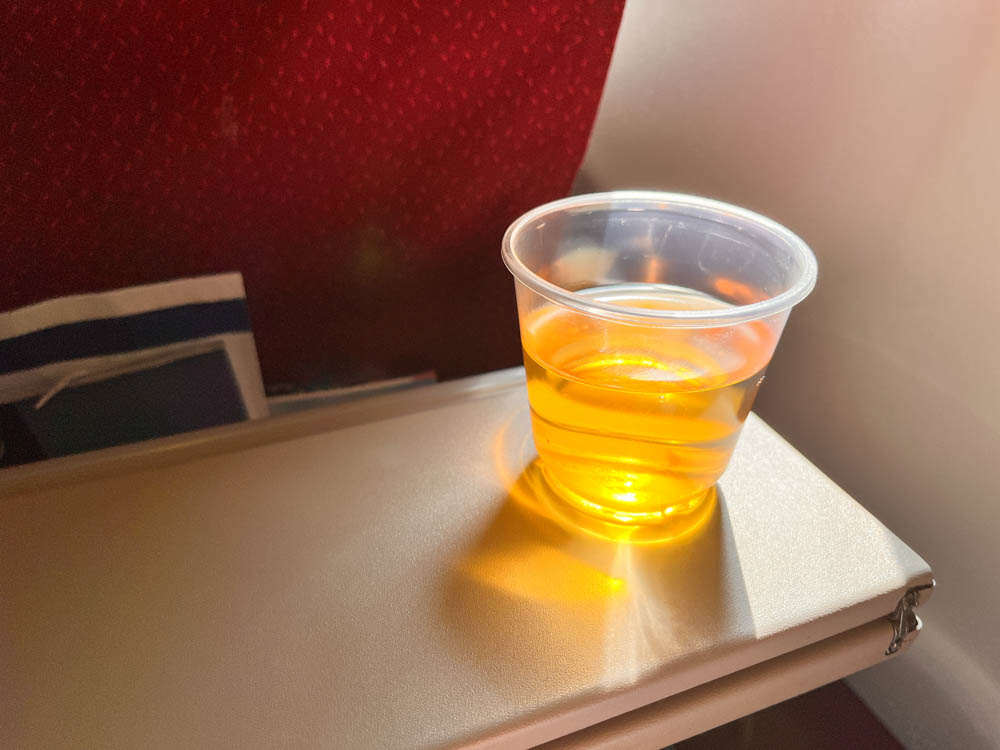

Unlike my previous underwhelming experience with the airline’s Nasi Goreng, this meal was one of the better inflight meals I’ve had. The chicken was tender and the gravy tasted great, with the only let down being the overcooked broccoli.
Arrival into Taiwan Taoyuan International Airport
We had a cloudy and rainy approach into Taipei, and nothing could be seen out my window until short finals. Unfortunately the 10 minutes’ delay out of KUL translated into an arrival 11-minutes late into Taipei.
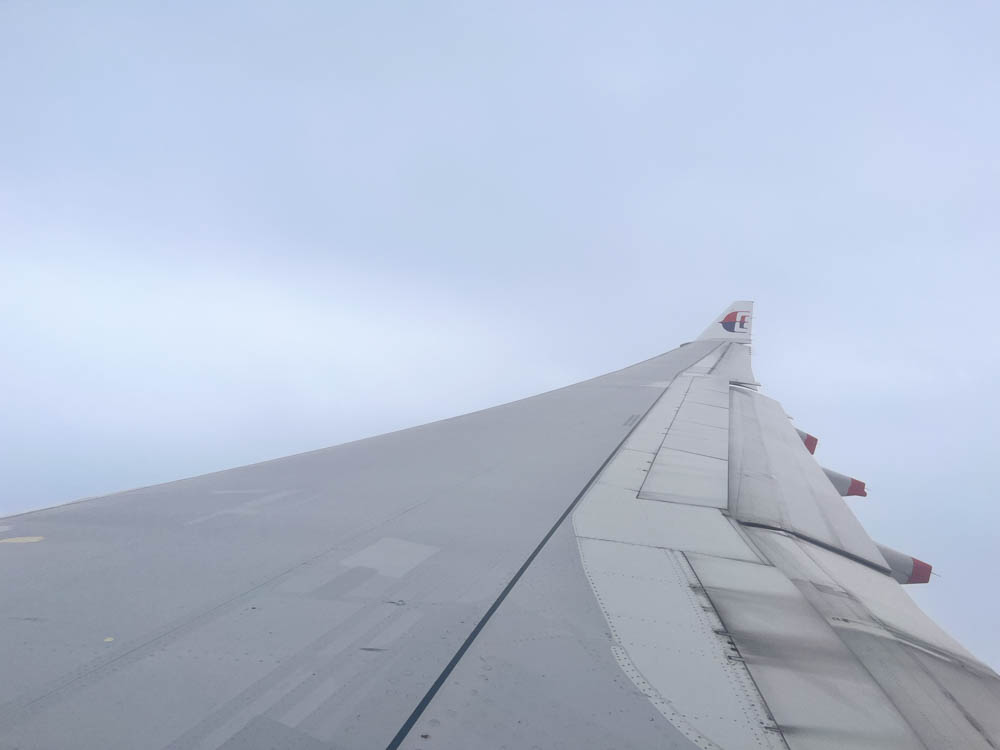
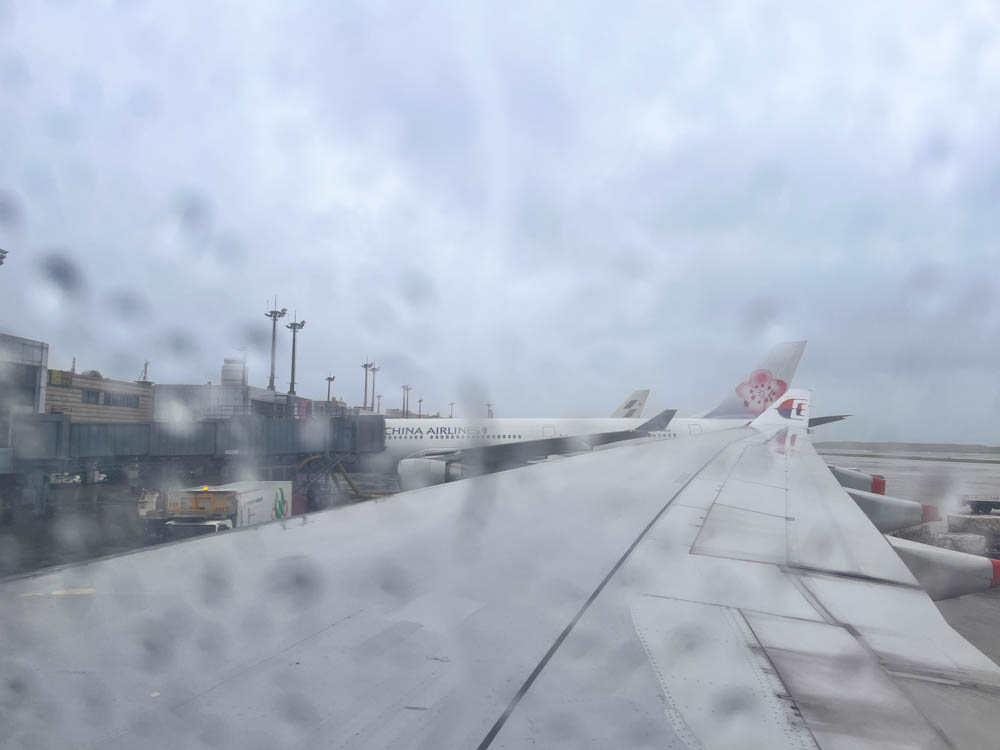
Taiwan enforces African swine fever screening for all arriving passengers from non-exempt countries. This and immigration took time, and our bags were already on the belt when we finished.
Final Thoughts
While Malaysia Airlines still delivers a passable regional Economy experience, its A330-300s are showing their age. Until the new A330neos join the fleet in full force, these ageing cabins remain part of the airline’s frontline product – an image that may not match its ambitions.
Comments
One response to “REVIEW | Malaysia Airlines A330-300 Economy Class (Kuala Lumpur to Taipei)”
[…] to Doha in Economy, and the seat was tired and lackluster. The same could also be said about the A330-300s and the A330-200s, both of which I experienced on the regional Kuala Lumpur – Taipei […]